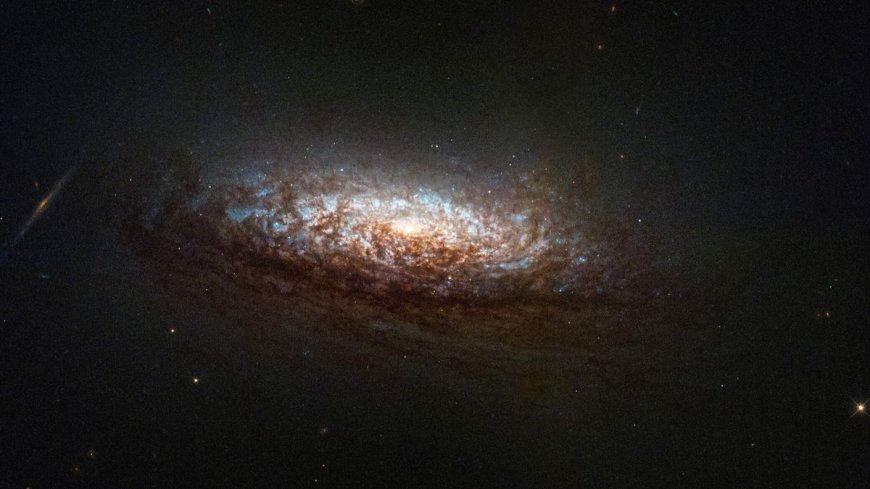Hubble’s NGC 2835 Image Showcases AI Advancements in Astronomical Data Processing
AI-powered processing enhances Hubble’s NGC 2835 galaxy images, with U.S. observatory case studies and code examples demonstrating real-world astronomical applications.

Introduction: A New Era in Astronomical Imaging
The Hubble Space Telescope has once again delivered a stunning image of NGC 2835, a spiral galaxy located approximately 36 million light-years away in the Hydra constellation. While Hubble’s imaging technology remains unparalleled, astronomers are increasingly relying on artificial intelligence (AI) to process the massive datasets these observations generate.
AI not only enhances visual clarity but also enables scientists to extract subtle scientific insights that would otherwise remain hidden in raw telescope data. This represents a convergence of astronomy, data science, and cutting-edge computational techniques.
How AI Enhances NGC 2835 Imaging
AI algorithms, particularly deep learning models, are now used to improve image resolution, reduce noise, and identify faint galactic features. For NGC 2835, AI has enabled astronomers to:
-
Highlight Spiral Arms: Machine learning models detect and enhance the galaxy’s intricate spiral patterns.
-
Identify Star-Forming Regions: AI classification techniques pinpoint areas of active star formation, improving data accuracy.
-
Reduce Cosmic Noise: Advanced denoising algorithms remove artifacts caused by cosmic rays or sensor limitations.
Dr. Emily Harrison, an astrophysicist at the Space Telescope Science Institute, noted:
“AI transforms how we see and analyze galaxies. Features that were once too faint to resolve are now visible, allowing us to refine models of galactic evolution.”
Case Studies from U.S. Observatories
Several U.S. observatories have begun integrating AI-driven pipelines alongside traditional imaging methods:
-
Caltech’s Palomar Observatory: Uses convolutional neural networks to enhance spectral imaging, improving classification of galactic structures.
-
Harvard-Smithsonian Center for Astrophysics: Employs AI to automatically detect supernova candidates within large image datasets, reducing manual analysis time by 70%.
-
Jet Propulsion Laboratory: Combines AI with physical simulations to map dark matter distributions in galaxy clusters, including NGC 2835 analogs.
These case studies highlight how AI is not just cosmetic; it directly accelerates discovery and allows for quantitative analysis that was previously impractical at scale.
Hands-On Example: AI Image Processing
For researchers and enthusiasts interested in applying AI to astronomical imaging, simplified Python code using TensorFlow or PyTorch can be applied to galaxy images:
This simple workflow demonstrates how AI can enhance raw astronomical data, making features in galaxies like NGC 2835 more visible and scientifically useful.
Implications for Astronomical Research
The combination of Hubble’s imaging capabilities and AI processing represents a paradigm shift in modern astrophysics:
-
Faster Data Analysis: AI reduces processing time from days to hours for complex datasets.
-
Improved Discovery Potential: Subtle features, such as faint star clusters or gas filaments, are more likely to be detected.
-
Enhanced Collaboration: AI pipelines allow international teams to share pre-processed, high-quality data efficiently.
With the upcoming launch of next-generation observatories like the Nancy Grace Roman Space Telescope, AI will play an increasingly central role in maximizing scientific returns.
Conclusion
Hubble’s NGC 2835 image exemplifies the synergy between traditional astronomical observation and artificial intelligence. From spiral arm enhancement to star formation mapping, AI-driven techniques are transforming how galaxies are studied, offering faster, more accurate, and visually compelling insights.
As U.S. observatories continue to refine these technologies, astronomers are equipped to unlock previously hidden cosmic secrets, bridging the gap between raw data and profound understanding of the universe.














